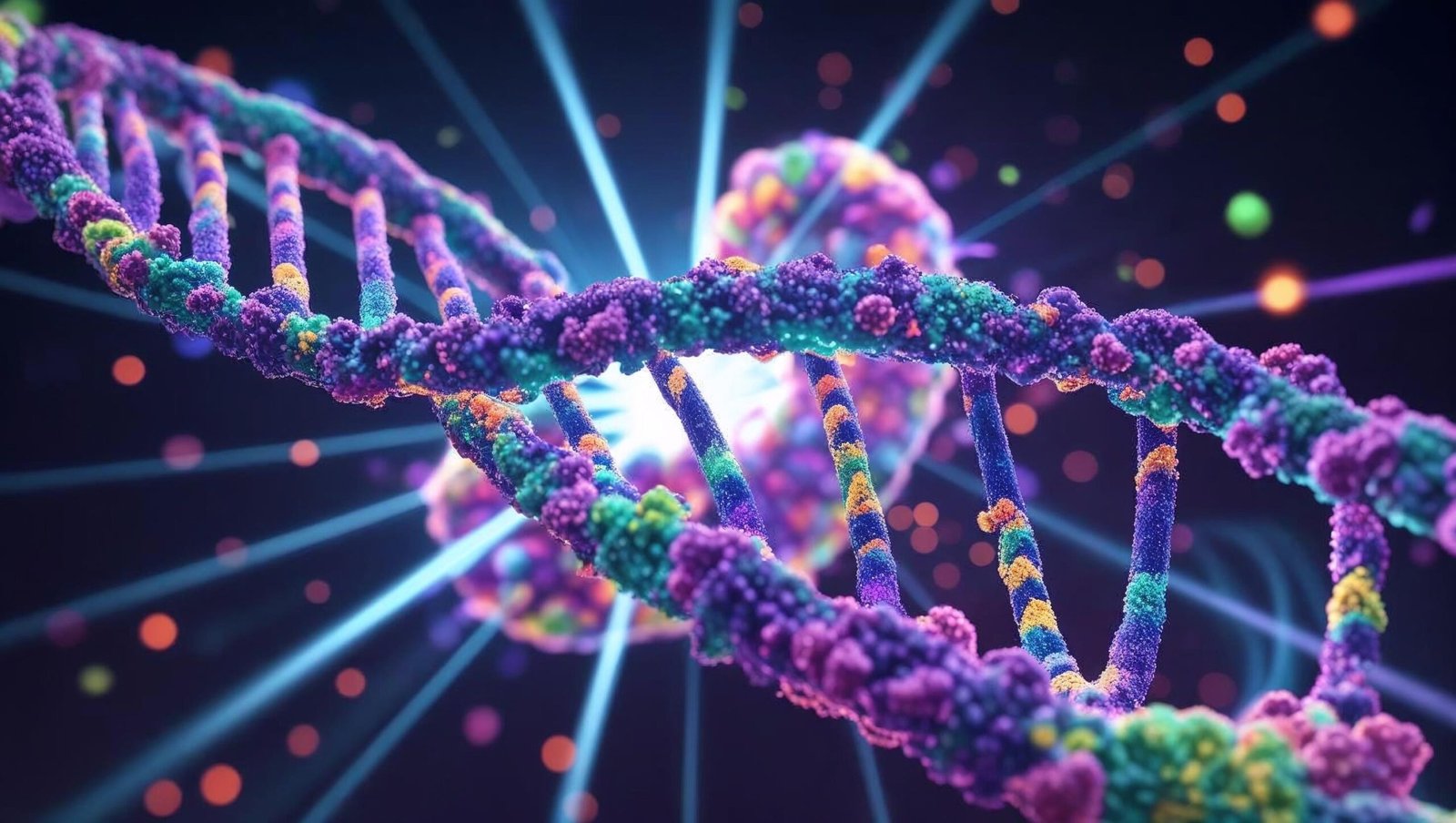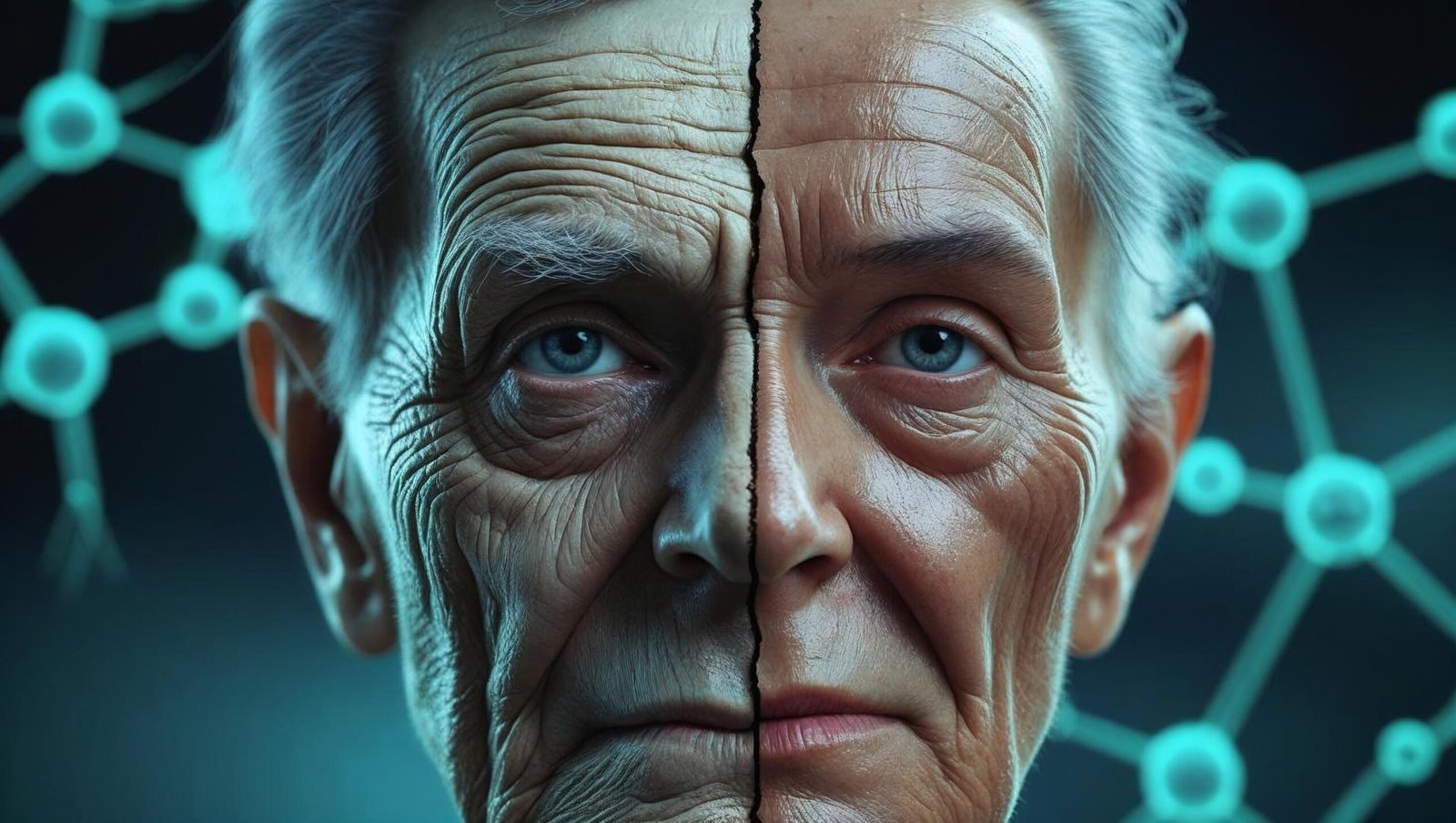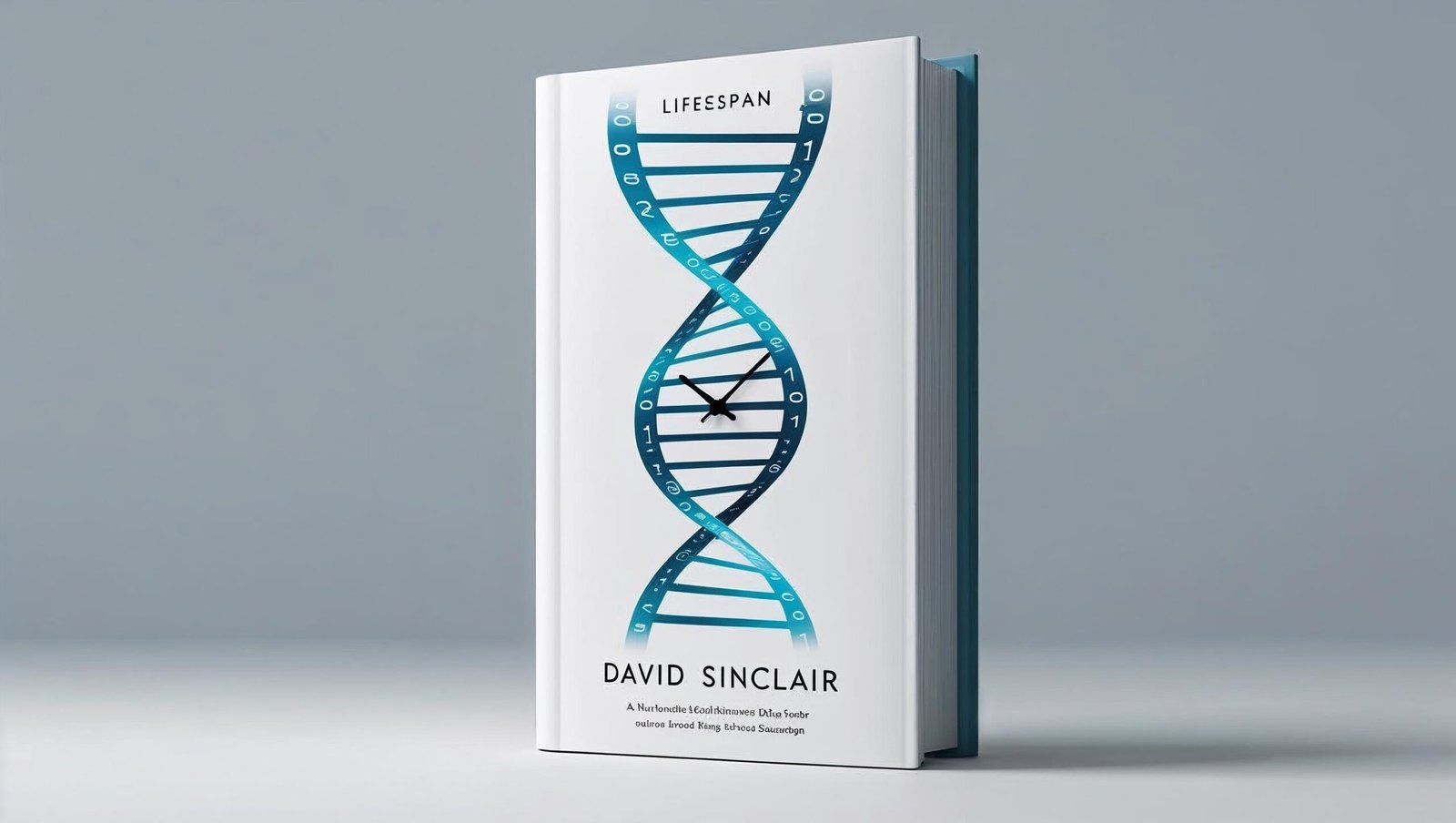Lifespan by David Sinclair: 11 Shocking Truths About Aging and How to Reverse It
Aging is a universal truth, a quiet thief that creeps in uninvited. In his groundbreaking book Lifespan by David Sinclair, the acclaimed Harvard geneticist dares to ask a radical question—What if aging is a disease, and what if we can cure it? This provocative idea is not just hopeful science fiction; it is the foundation of what might be the most important biological revolution of our time.
In this comprehensive review, we shall dive deep into the insights, science, implications, and controversy surrounding Lifespan by David Sinclair, a book that forces us to confront everything we believe about getting older.

1. The Foundational Premise of Lifespan by David Sinclair
The central thesis of Lifespan by David Sinclair is elegantly simple but revolutionary: Aging is not inevitable. Sinclair proposes that aging is a disease—a treatable one—and not merely a result of entropy or cellular wear-and-tear. According to him, human lifespans can be dramatically extended through genetic reprogramming, lifestyle interventions, and emerging biotechnology.
This is not merely theory. Sinclair provides compelling scientific data from decades of research, much of which he conducted himself, on organisms ranging from yeast to mice to humans. He introduces readers to the “Information Theory of Aging”, arguing that the primary cause of aging is the loss of epigenetic information over time.
2. Epigenetics and the “Information Theory of Aging”
The heart of Lifespan by David Sinclair lies in the epigenetic explanation of aging. DNA, he says, is like the hardware of a computer, but epigenetics is the software—determining how genes are expressed. Over time, this software becomes corrupted. Aging, in essence, is the loss of instructions that tell the body how to function properly.
This theory stands in sharp contrast to traditional beliefs that attribute aging to accumulated damage or oxidative stress. Instead, Sinclair’s model implies that if we can reset or repair this epigenetic information, we can potentially reverse aging.
3. Sirtuins and NAD+: The Guardians of Youth
A major section of Lifespan by David Sinclair is dedicated to a class of proteins called sirtuins, which play a critical role in regulating cellular health, repairing DNA, and promoting longevity. Sirtuins require a molecule called NAD+ (Nicotinamide Adenine Dinucleotide) to function properly.
Sinclair details how NAD+ levels decline with age and how supplementation with NAD+ precursors like NMN (Nicotinamide Mononucleotide) can restore youthful vitality. He himself has been taking NMN, resveratrol, and metformin as part of his daily regimen, which he discusses openly in the book.
4. Lifestyle Interventions: Fasting, Exercise, and Hormesis
What makes Lifespan by David Sinclair so readable is not just the science but the practical takeaways. He advocates for intermittent fasting, cold exposure, high-intensity exercise, and plant-based diets—all of which trigger a biological phenomenon called hormesis, where mild stress stimulates longevity genes.
Rather than avoiding stress altogether, Sinclair argues that stressing the body in specific, controlled ways can switch on longevity mechanisms that keep us youthful longer.
5. The Genetic Engineering Frontier
A particularly astonishing aspect of Lifespan by David Sinclair is its glimpse into the CRISPR revolution and gene reprogramming. Sinclair’s team has demonstrated partial cellular rejuvenation in mice using Yamanaka factors—a combination of four genes that can turn adult cells back into pluripotent stem cells.
He believes that in the near future, such interventions will be used to regenerate organs, reverse blindness, and restore youthfulness in aged tissues. The implications are staggering—not just for lifespan, but for healthspan.
6. Ethical Dilemmas and Societal Implications
The ideas presented in Lifespan by David Sinclair are not without controversy. Extending human life raises profound questions about overpopulation, wealth disparity, and access to life-extending technology.
Would such advancements be available only to the wealthy? How will retirement and pensions work in a world where people routinely live past 100 or even 120? Sinclair doesn’t shy away from these ethical debates. He invites us to consider how society must evolve alongside our biology.

7. Personal Practices and Supplements
Sinclair shares his personal longevity stack in Lifespan by David Sinclair—a mix of NMN, resveratrol, vitamin D, and metformin. While he does not recommend these for everyone without consultation, the inclusion of his personal regimen adds credibility and transparency to his arguments.
He also practices time-restricted eating, consumes fewer calories, and avoids sugar. These lifestyle choices are grounded in both ancestral biology and cutting-edge molecular science.
8. Criticism and Skepticism
Like all pioneering thinkers, Sinclair has his critics. Some scientists argue that Lifespan by David Sinclair relies too heavily on animal models, and that results in yeast or mice cannot be directly translated to humans.
Others caution that longevity supplements may have unknown long-term side effects. Despite this, the book remains intellectually stimulating and backed by solid references and peer-reviewed research.
9. The Hopeful Future of Anti-Aging
Perhaps the most inspiring part of Lifespan by David Sinclair is its optimism. The author paints a future where 80 is the new 50, where diseases of aging like Alzheimer’s and heart disease are not only treatable but preventable.
It’s not a utopia; it’s a vision grounded in real science, albeit at the bleeding edge. This vision—of healthy longevity—resonates deeply in a world where aging is still seen as inevitable.
10. What This Means for You and Me
The book is not just for scientists. Lifespan by David Sinclair is written for the average reader, the health enthusiast, the aging parent, or the young professional seeking to secure a vibrant future.
The message is simple: you can take control of your biology. Whether it’s through lifestyle changes, emerging therapies, or supplements, there is hope. And that hope is founded not on wishful thinking but on real, reproducible science.
11. Why This Book Matters
Few books shake the very foundations of a field. Lifespan by David Sinclair is one of those rare works. It bridges molecular biology with philosophy, ethics, and health. It invites us to question everything we know about our bodies, and it empowers us to make better choices.
This is not just a review. It is a declaration: Aging is not destiny. As Sinclair says, “The future is coming faster than we think, and we are not ready.”
Expanding the Vision of Lifespan: Unpacking the Unseen Layers
To truly grasp the depth of Lifespan by David Sinclair, one must look beyond its revolutionary thesis and investigate its social, philosophical, and personal ramifications. The author does more than just present scientific findings—he challenges the way we perceive time, identity, and human purpose. These are not merely academic inquiries; they hold profound relevance for every individual alive today.
What happens when the biological clock is no longer a reliable predictor of our decline? Sinclair invites readers to reimagine not just longevity, but the quality and vitality of extended life. He dares to suggest that death from aging could one day be considered as obsolete as death from smallpox.

The Fallacy of Natural Decline: A Cultural Myth
One of the most jarring revelations in Lifespan by David Sinclair is the suggestion that the process of aging, often accepted as natural and unavoidable, might instead be an error of evolution—a relic of a time when survival past reproduction offered little advantage.
Sinclair draws from evolutionary biology to explain why nature has not prioritised longevity. According to him, aging is not a designed program but a consequence of biological negligence. The body repairs itself less and less over time, not because it is programmed to die, but because it is not programmed to maintain itself indefinitely. This shift in narrative—from destiny to dysfunction—forms the moral and scientific fulcrum of Lifespan by David Sinclair.
The Four Pillars of Youthful Living
Sinclair proposes a model based on four primary interventions that can significantly extend lifespan and improve healthspan:
-
Epigenetic Reprogramming
-
Metabolic Modulation (e.g., NAD+ replenishment)
-
Hormetic Lifestyle Stressors (exercise, fasting, cold exposure)
-
AI-guided Personal Medicine and Diagnostics
Incorporating all four pillars may sound daunting, but Lifespan by David Sinclair explains them in practical, actionable terms. From choosing when to eat to when to exert and when to rest, the book illustrates how to integrate longevity practices into everyday life.
Sinclair’s Philosophy: Beyond Biology
An understated brilliance of Lifespan by David Sinclair lies in how it blends science with existential reflection. The author doesn’t shy away from probing deeper philosophical questions: If we could live to 150, how would that change our relationships, careers, or concept of legacy?
He urges us to transcend the “pro-aging trance”—a mental state of complacency and acceptance regarding physical decline. In its place, he promotes a “longevity mindset,” wherein readers are encouraged to become proactive stewards of their own health, rather than passive victims of their birthdate.
The Global Perspective on Aging
The implications of Lifespan by David Sinclair stretch far beyond the laboratory or the individual. Globally, aging populations are causing economic strain through increasing healthcare costs and shrinking workforces. Sinclair argues that if societies invest in delaying aging rather than merely treating age-related diseases, the economic benefits could be staggering.
For example, a mere one-year increase in average lifespan could translate into trillions in global GDP due to reduced healthcare costs and extended workforce participation. In this context, aging is not only a health crisis but a looming economic emergency.
Public Health and Preventive Medicine: The Real Revolution
While high-tech interventions like gene editing receive media attention, Sinclair maintains that public health initiatives and preventive medicine are likely to have the greatest short-term impact. Lifespan by David Sinclair outlines several real-world applications already being explored, such as:
-
Early detection of epigenetic drift through biological age tests.
-
Personalised interventions based on epigenetic biomarkers.
-
Affordable NAD+ precursor supplementation for global populations.
The goal is not simply to live longer, but to compress morbidity—to spend a greater proportion of life in vibrant health, rather than suffering from chronic conditions.

Critique from a Layman’s Perspective
Although Lifespan by David Sinclair is widely celebrated, it’s worth mentioning that some casual readers may find certain sections heavily technical. For those without a background in molecular biology, the scientific jargon may occasionally seem dense. Yet, Sinclair and his co-author Matthew LaPlante do make a concerted effort to clarify complex topics through analogies, metaphors, and real-life stories.
However, it would not be far-fetched to say that Lifespan by David Sinclair sometimes rides the edge of scientific evangelism. Its optimism is undeniably bold—bordering, at times, on utopian. Readers must discern the difference between what is probable and what is merely possible. Nonetheless, the sheer force of Sinclair’s conviction makes it impossible to dismiss the work.
Integration into Daily Life: A Practical Summary
For the everyday reader seeking tangible ways to apply the teachings of Lifespan by David Sinclair, here are the distilled core actions:
-
Intermittent Fasting: At least 16 hours per day.
-
Exercise: Short bursts of high-intensity training, 3–4 times weekly.
-
Cold Showers: 2–3 minutes to stimulate mitochondrial resilience.
-
Diet: Mostly plant-based with limited sugar and animal protein.
-
Supplements: Consider NMN and resveratrol (with medical supervision).
-
Sleep Hygiene: Deep, restful sleep as a non-negotiable priority.
-
Mental Resilience: Daily learning and curiosity to stave off cognitive aging.
By embedding these strategies into one’s lifestyle, Sinclair asserts that the aging process can be not only slowed but meaningfully reversed over time.
Implications for the Future of Humanity
Perhaps the boldest idea in Lifespan by David Sinclair is that the first person to live to 150 has already been born. This assertion, once dismissed as science fiction, now garners serious academic interest. If Sinclair’s predictions hold true, future generations may one day regard today’s life expectancy statistics as primitive and unacceptable.
However, extending lifespan raises pressing societal questions: How will pensions adapt? What about the environmental impact of longer-living humans? Will the class divide widen if anti-aging treatments are expensive and exclusive?
Sinclair urges policymakers to begin planning now for a post-aging society, advocating for regulation, equal access, and ethical safeguards as anti-aging technologies mature.
A Paradigm Shift in Human Identity
In its final chapters, Lifespan by David Sinclair ventures into uncharted territory: the redefinition of what it means to be human. If our lives are no longer constrained by the expectation of decline, then our roles, aspirations, and societal norms must evolve accordingly.
Imagine careers that span a century, relationships that evolve over decades, and a population with the wisdom of age and the vitality of youth. These are not fantasies, Sinclair argues—they are within reach, provided we are courageous enough to embrace them.
Reader Reactions and Cultural Impact
Since its publication, Lifespan by David Sinclair has sparked debates across disciplines—from biotech conferences to ethics committees to dinner tables. The book has inspired health bloggers, medical professionals, and futurists alike. Social media communities now track their NAD+ levels and NMN dosages, often citing Sinclair as their guiding light.
The ripple effect of the book is not just about selling more supplements; it’s about changing the public narrative around what is biologically possible and morally acceptable in the realm of aging.

Conclusion: A New Chapter in Human History
In sum, Lifespan by David Sinclair is not just a chronicle of scientific breakthroughs; it is a harbinger of a new epoch in human history. It invites readers to take ownership of their biological future, to act with intention, and to demand more from the time they’ve been given.
Whether or not every prediction in the book comes true, its central message remains enduringly powerful: Aging is not a law of nature—it’s a condition we can understand, manage, and perhaps even defeat.
FAQs about Lifespan by David Sinclair
Q1. Is Lifespan by David Sinclair scientifically credible?
Yes, the book is based on decades of peer-reviewed research, though some theories remain controversial and under further investigation.
Q2. What is the Information Theory of Aging?
It suggests that aging results from the loss of epigenetic information, not just cellular damage.
Q3. Can we really reverse aging?
Partial age-reversal has been demonstrated in animal models, and human applications are being actively researched.
Q4. What supplements does David Sinclair recommend?
He personally uses NMN, resveratrol, metformin, and vitamin D, but advises readers to consult healthcare providers before use.
Q5. Is this book only for scientists?
Not at all. Lifespan by David Sinclair is written in an accessible style for general readers.
For more in-depth book reviews, visit
🔗 shubhanshuinsights.com
📣 Comment your thoughts below:
“This book made me rethink my life choices.”
“Aging no longer feels inevitable.”
“Powerful, eye-opening, and urgent.”